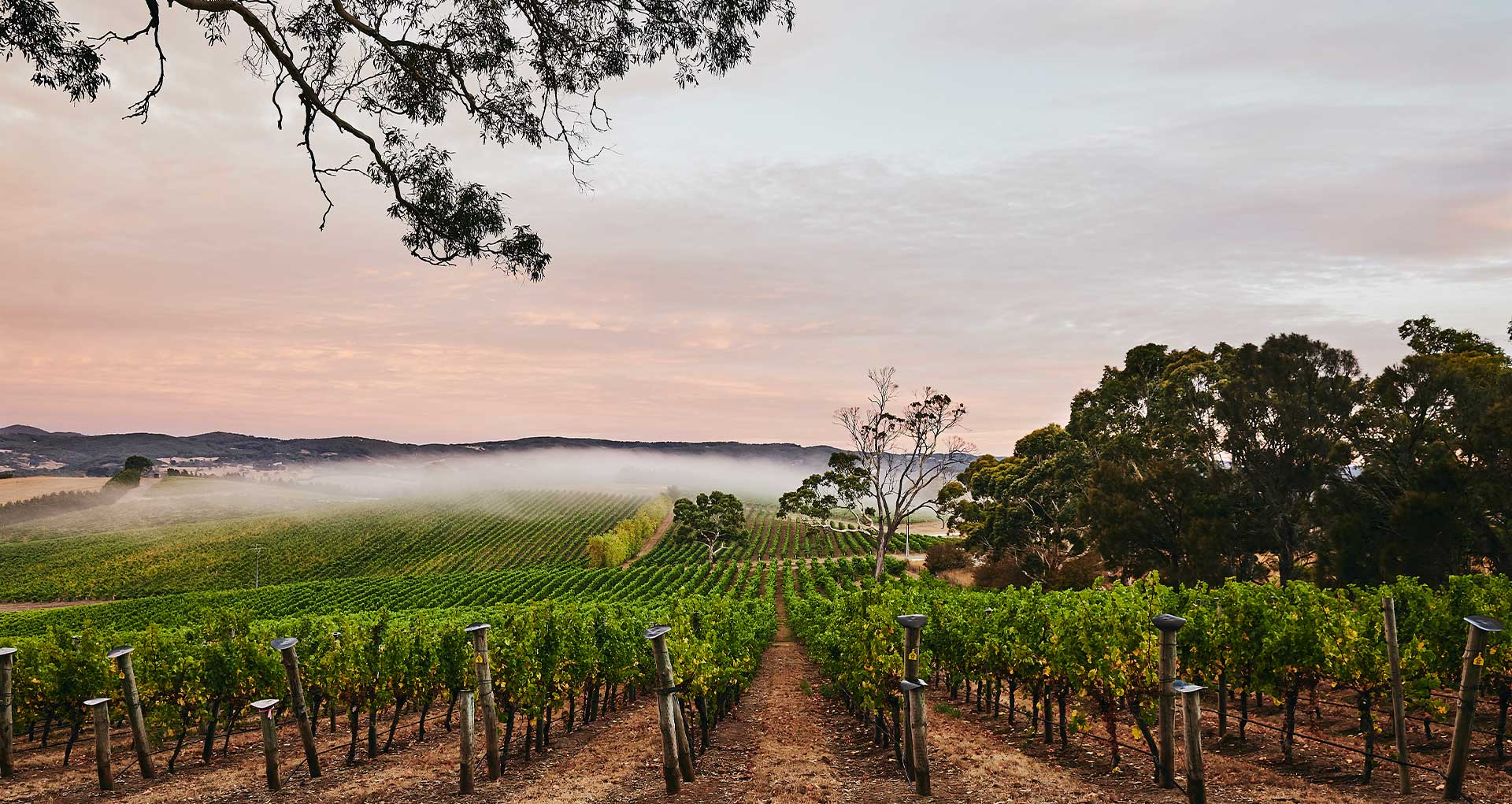
Unfortunately, you do not meet the age requirement to enter this website.

Unfortunately, you do not meet the age requirement to enter this website.
Chardonnay is one of the most widely planted and beloved white wine varietals in the world. But it’s also one of the most divisive. Unlike the light, fresh and zingy flavours you would expect to taste in other popular white wines such as Sauvignon Blanc, Pinot Gris or Riesling, Chardonnay boasts a full-bodied and opulent character that sets it apart.
An incredibly adaptable grape, Chardonnay thrives in both cool and warm climates and can produce an array of flavours depending on where and how the wine is made. Chardonnay can range from lean, crisp and mineral-driven with flavours of apple and lemon to riper expressions that display notes of pineapple, papaya and stone fruit. However, it’s Chardonnay’s rich and creamy texture, coupled with its signature flavours of vanilla and butter when aged in oak, that make it a distinctive choice for wine lovers.
From a rich and full-bodied table wine to the elegant flavours of a festive Blanc de Blancs sparkling wine, Chardonnay's versatility makes it exciting, as it pairs well with a variety of dishes for a complete meal experience.Chardonnay also holds a special place in the heart of Nepenthe’s Head Winemaker, James Evers, as it’s his all-time favourite wine.He says: “Chardonnay is the most diverse grape variety in the world, and it gives the most back. One of the things I love about the Adelaide Hills is that it’s fast becoming one of the best Chardonnay regions in Australia, if not the world. I drink Chardonnay with anything and everything. It's heavy enough to handle some red meats and light enough to handle seafood. It’s such a fantastic variety.”
So, whether you prefer a lighter and more acidic Chardonnay grown in cooler climates or a bolder, buttery one grown in warmer regions, there is a Chardonnay that will suit your taste. You just need to know what to look for.
Chardonnay, which takes its name from a small town in the Maconnais region of Burgundy, France, has a history dating back to the 1300s.
In Australia, James Busby, a viticulturist, writer, and pioneer widely known as the ‘father of Australian wine’, introduced Chardonnay grapes in the 1830s. The grapes quickly took root here thanks to their disease resistance, relatively hardy temperament, early ripening and site adaptability.
Chardonnay is now Australia’s most widely exported white wine.
Chardonnay is a dry white wine with moderate acidity and tannins, and its flavour profile is heavily influenced by its vineyard’s terroir and oak ageing. Chardonnay can offer anything from crisp lemon and apple notes to ripe tropical fruit flavours like pineapple and papaya. And when aged in oak, Chardonnay can pick up secondary flavours like toast, cream, vanilla, and butter.
Chardonnay is also the primary grape varietal used in Champagne, so if you see the term 'Blanc de Blancs' on a Champagne or sparkling wine label, it will be made of all white grapes, most commonly Chardonnay.
When Chardonnay is aged in oak barrels, something magical happens. The malic acid in the fruit transforms into lactic acid, giving the wine a full-bodied, creamy, buttery texture. The tannins from the oak also get absorbed, which can give the wine a caramel or butterscotch flavour with woody and vanilla notes.
On the other hand, Chardonnays that are fermented and stored in stainless steel tanks, like other white wines, are typically crisp, bright, citrusy and minerally, much like Pinot Grigio or Sauvignon Blanc.
Chardonnay grapes grown in cool climate regions have a longer growing season with lower temperatures, resulting in slower ripening and higher acidity. This tends to produce wines that are more elegant, with citrus and mineral notes and a lighter body.
Chardonnay grapes grown in warmer climates have a shorter growing season with higher temperatures, leading to faster ripening and lower acidity. Chardonnay made from these regions is richer and fuller-bodied, with ripe tropical fruit flavours.
Chilling Chardonnay can enhance its taste, but it's important to get the serving temperature just right to ensure maximum appreciation of its delightful aromas, flavours, and acidity.
Chardonnay's versatility and range of flavours make it a great wine to pair with food. It’s a fantastic match for white meats, seafood, and vegetables.
We meticulously select fruit from various sub-regions of the Adelaide Hills, resulting in a range of exceptional oaked and unoaked Chardonnays that showcase the unique terroir of our cool climate home. Our Chardonnays are elegant and refined with vibrant fruit flavours perfectly balanced by crisp acidity.
We recommend:
2022 Nepenthe Altitude Chardonnay
Crafted in a modern Australian style, this Chardonnay exhibits soft white peach and sweet spice aromas, complemented by an elegant structure and clean, zesty finish.
2021 Nepenthe Pinnacle Chardonnay
This Chardonnay has been aged for 10 months in French oak barrels, resulting in an exceptional wine that displays flavours of stone fruit and hazelnuts, with notes of grapefruit and lemon curd.
Nepenthe's Apex collection is our finest representation of the Adelaide Hills region, showcasing a singular clone, site, and vintage in every bottle. Its lively aroma exudes concentrated stone fruits, complemented by delicate oak hints on the palate. This elegant cool-climate wine impresses with its finesse, length, and persistent finish.
To truly experience the magic of Nepenthe’s Chardonnay and other cool climate wines from the picturesque Adelaide Hills, visit our newly renovated Cellar Door.
Or shop the range online